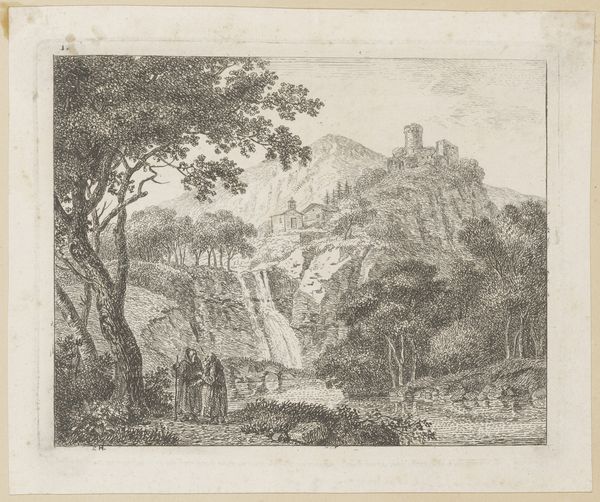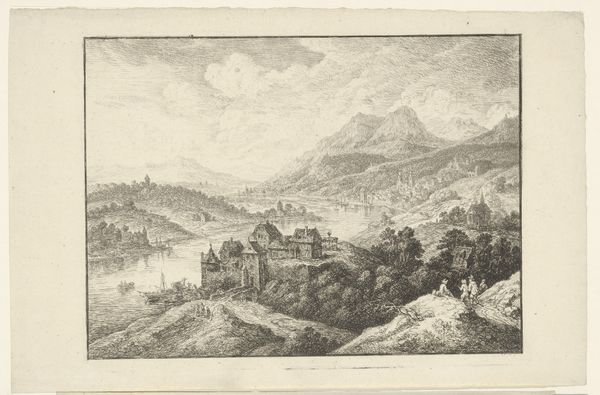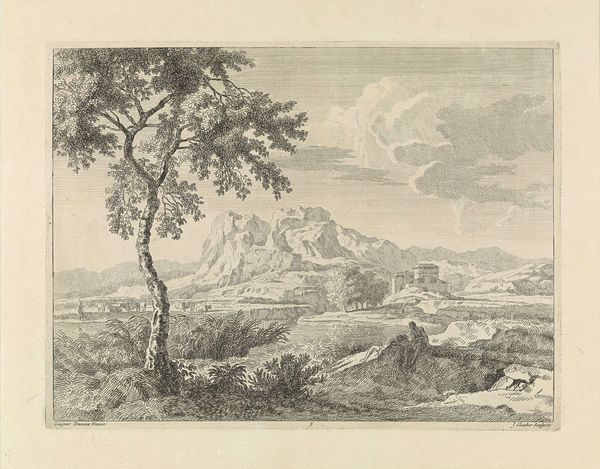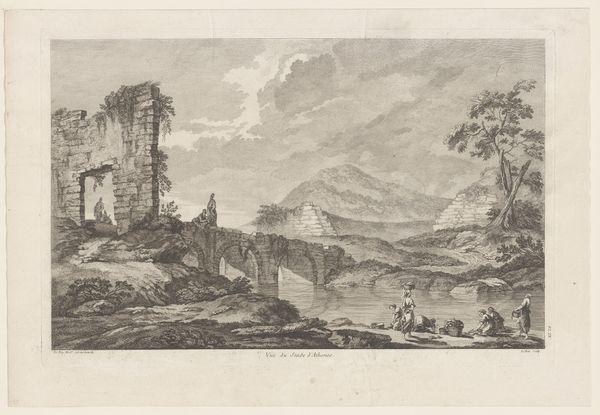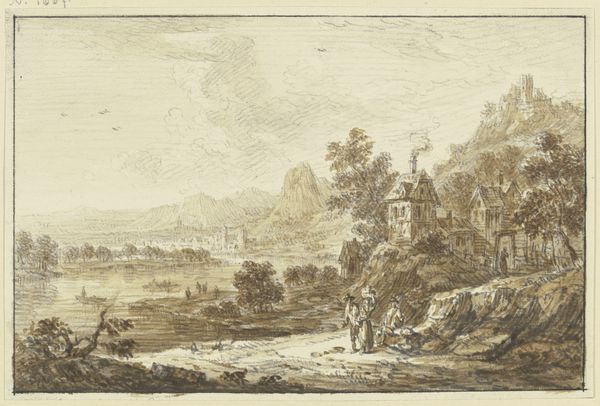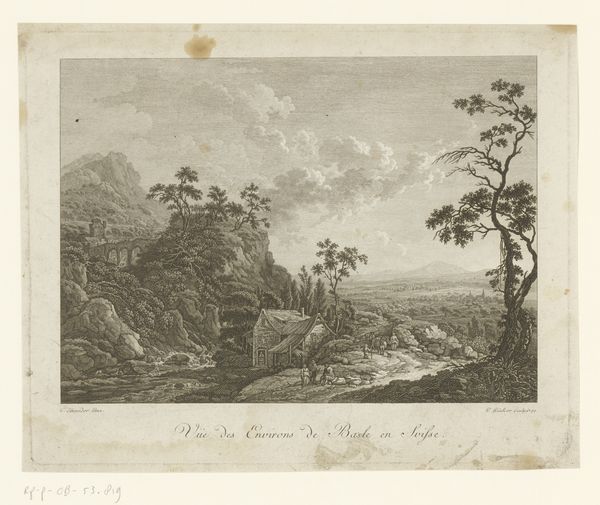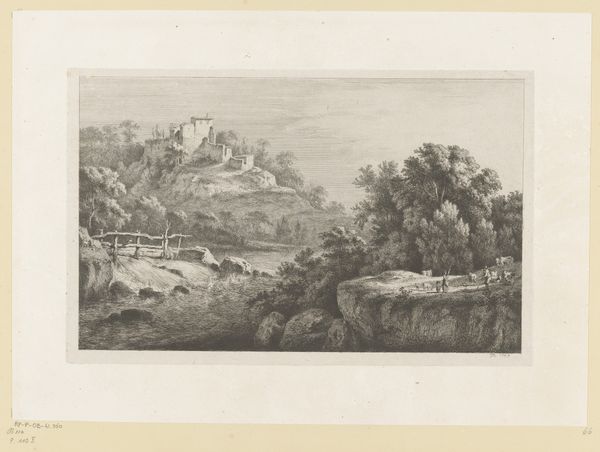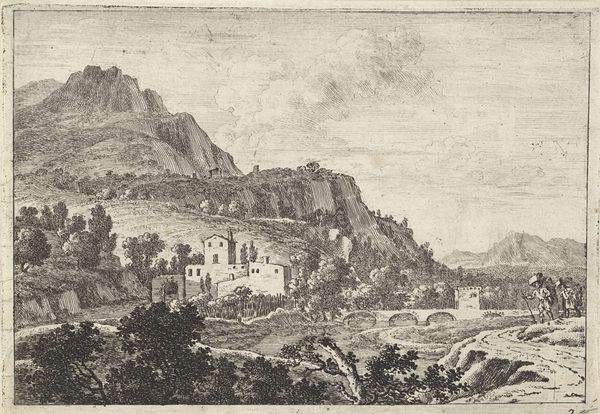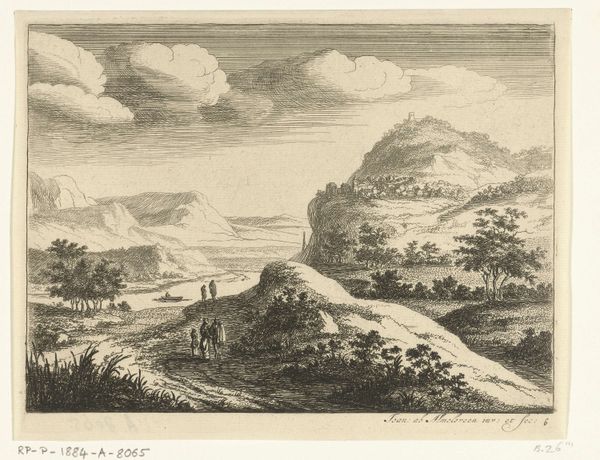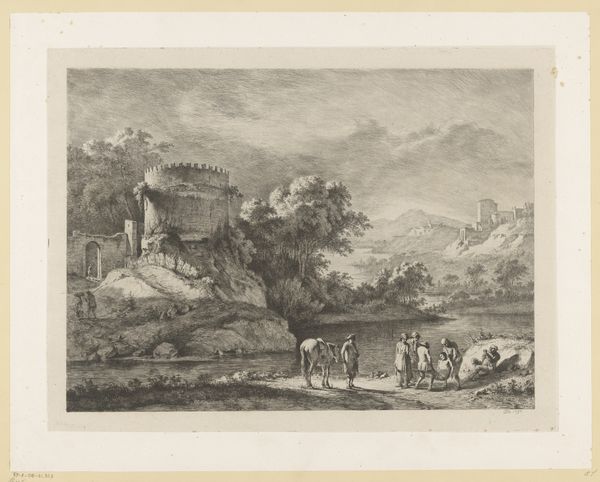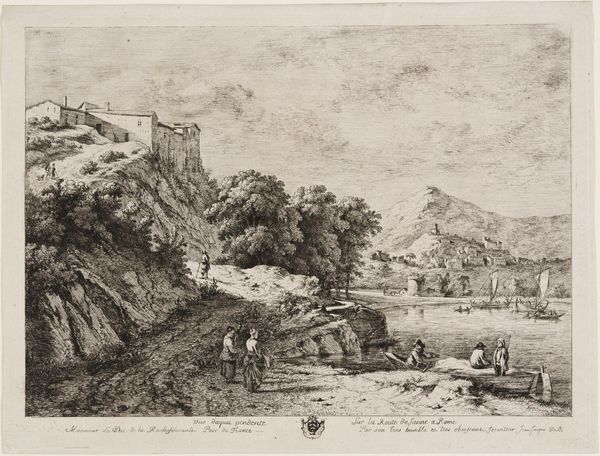
print, engraving
# print
#
old engraving style
#
landscape
#
romanticism
#
engraving
Dimensions: height 120 mm, width 151 mm
Copyright: Rijks Museum: Open Domain
Ludwig Hess made this landscape in the late 18th century using etching, a printmaking technique. The method involves coating a metal plate with a waxy, acid-resistant substance called a 'ground'. The artist then draws through this ground with a sharp needle, exposing the metal. When the plate is immersed in acid, the drawn lines are etched into the metal. The depth of the lines determines how much ink they hold, and how dark they appear in the final print. Hess masterfully employs this technique to create a detailed depiction of a mountainous landscape. Look at the intricate textures: the rocky outcrop on which the building sits, the foliage of the trees, the distant mountain. The etching allows for fine lines and subtle gradations of tone, which are built up with layered hatching and cross-hatching. The work involved would have been considerable. Ultimately, Hess's etching is a superb demonstration of how a traditional craft process can capture the beauty and complexity of the natural world.
Comments
No comments
Be the first to comment and join the conversation on the ultimate creative platform.
